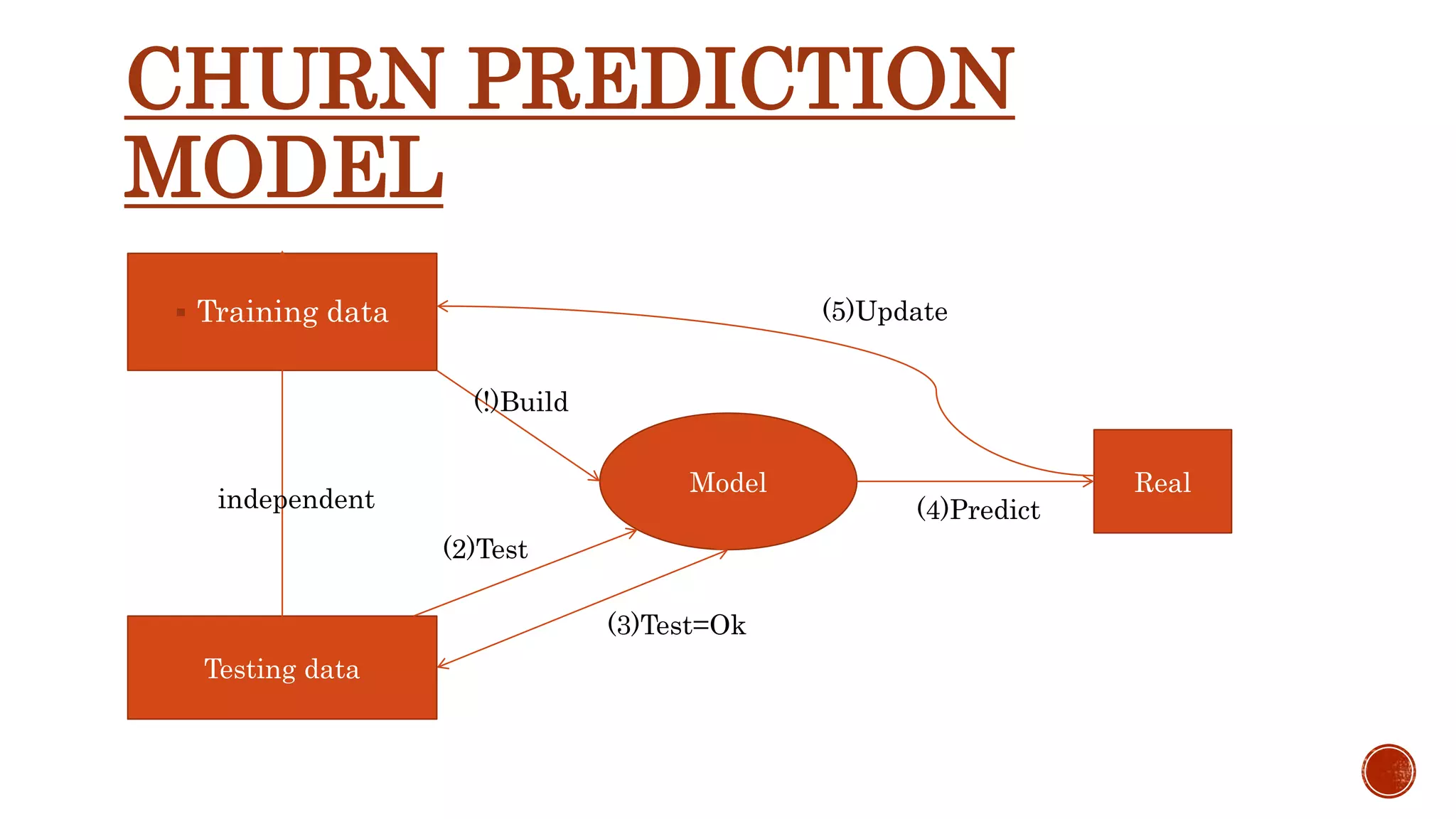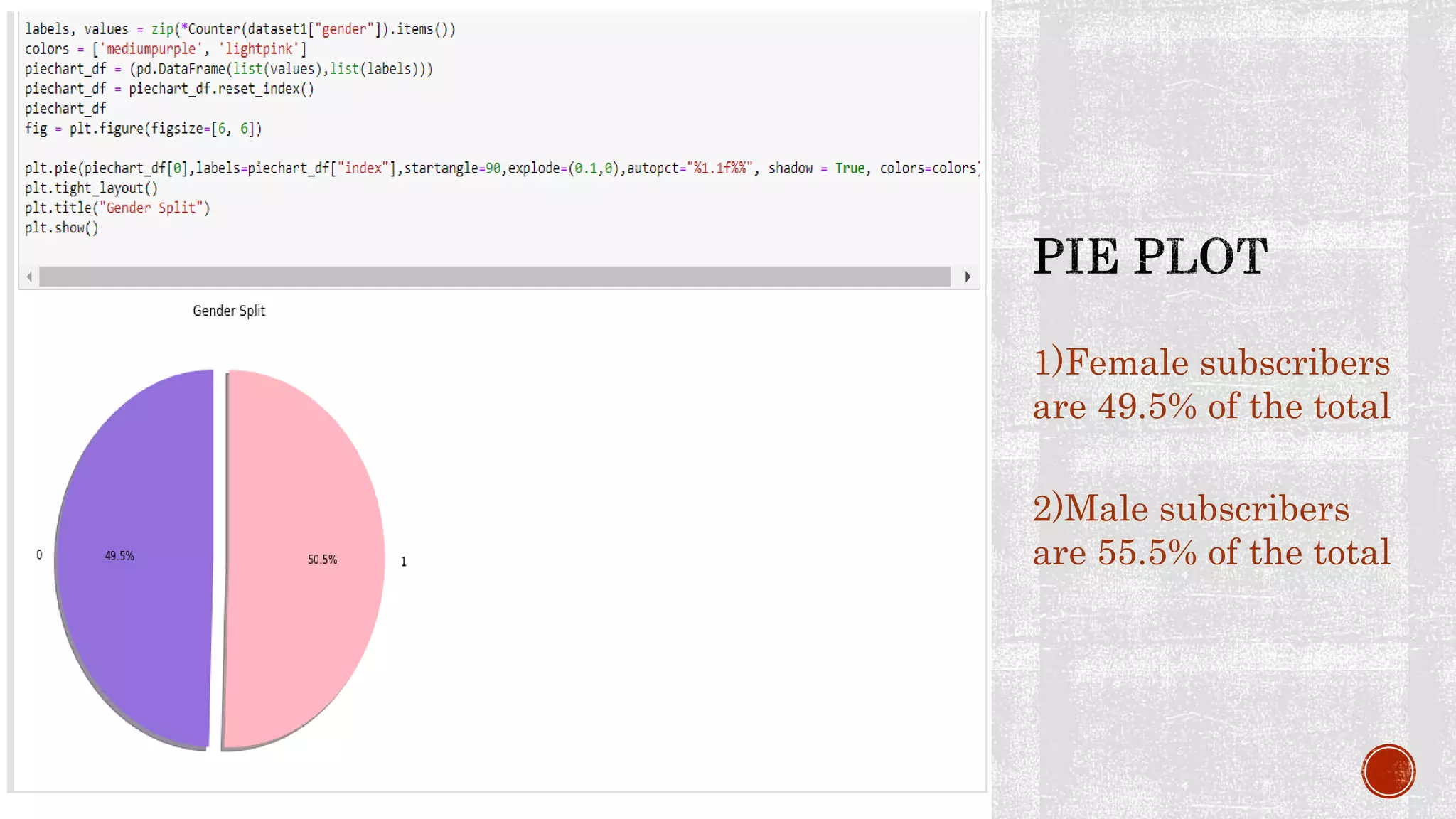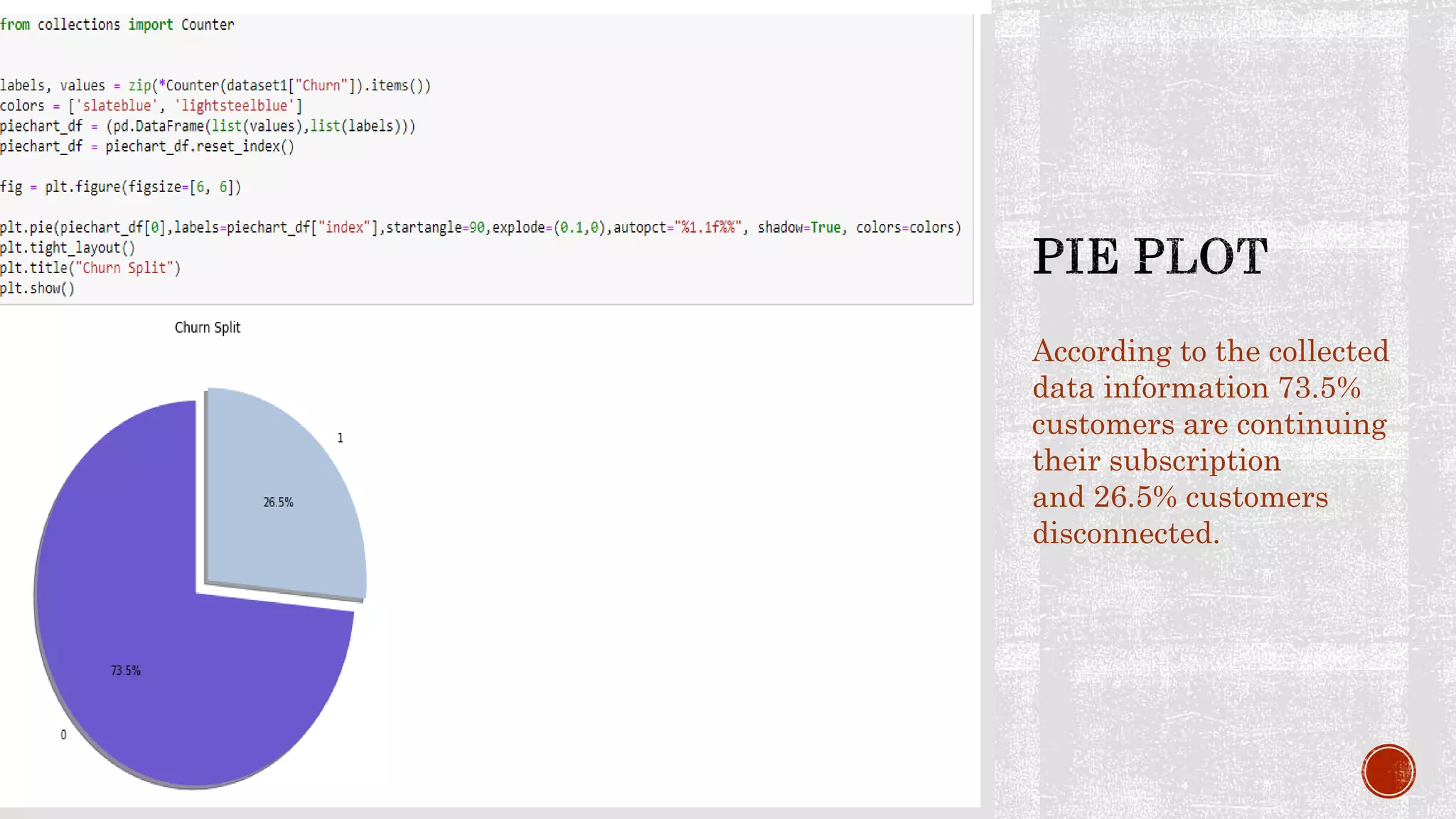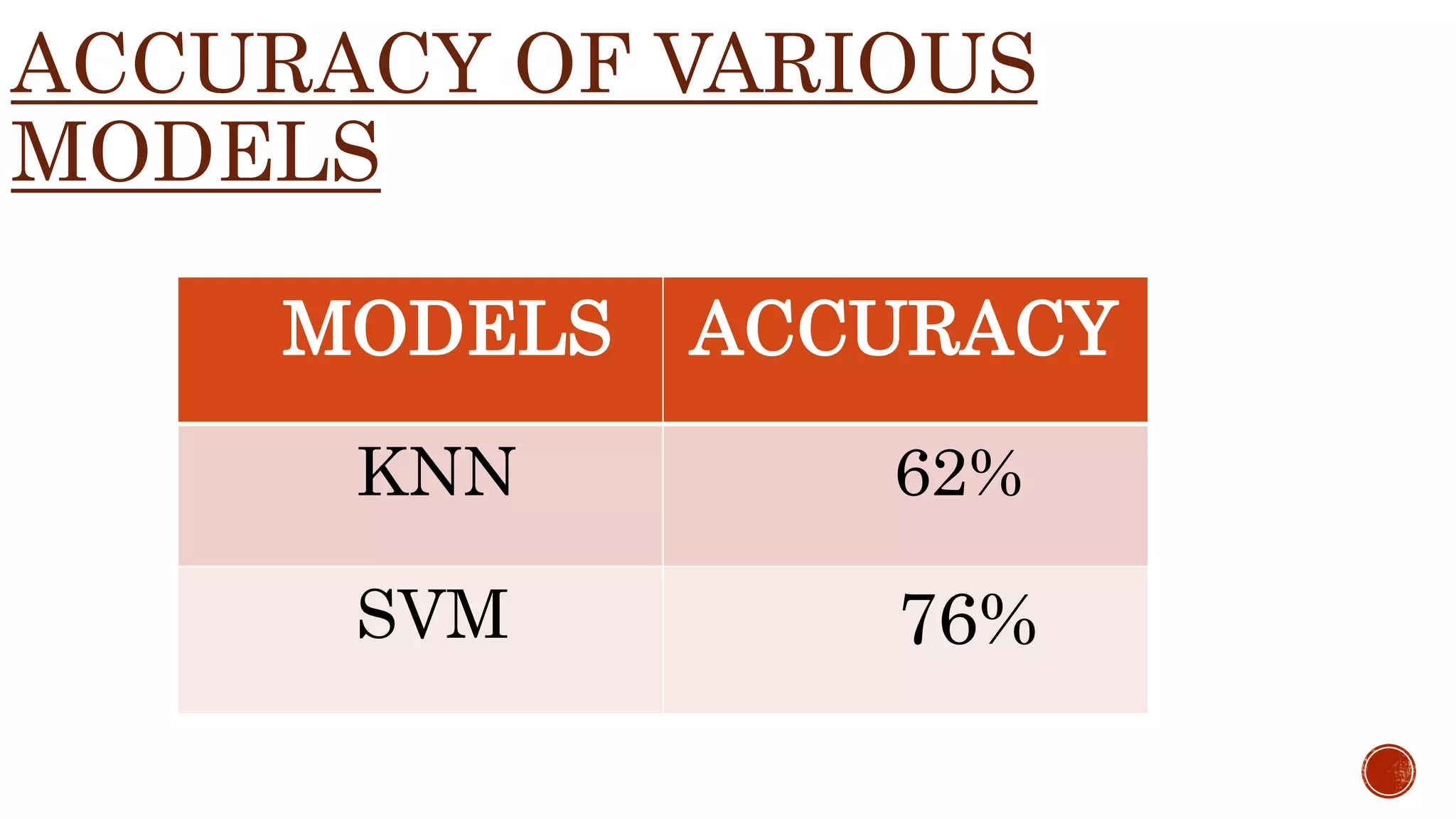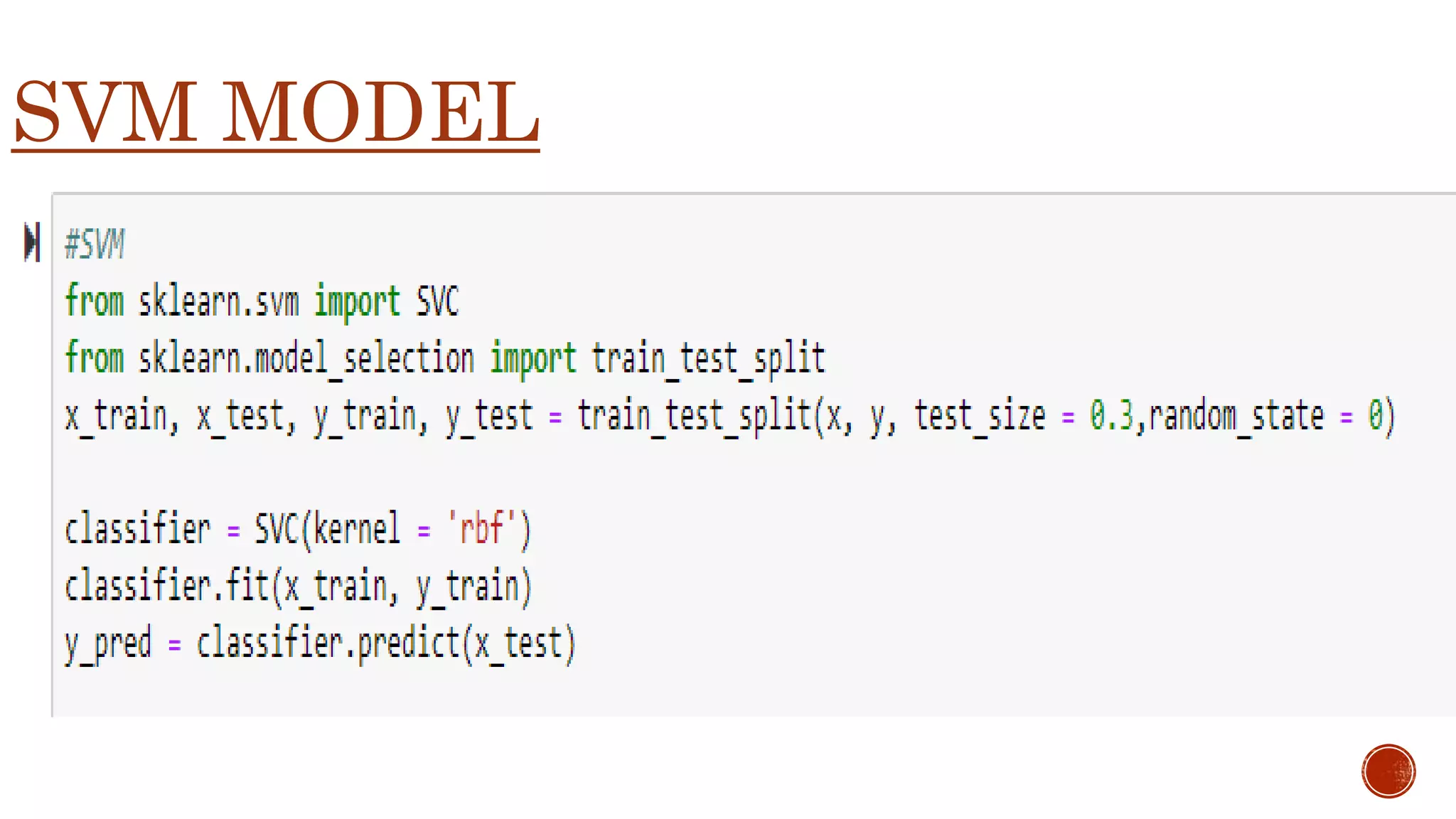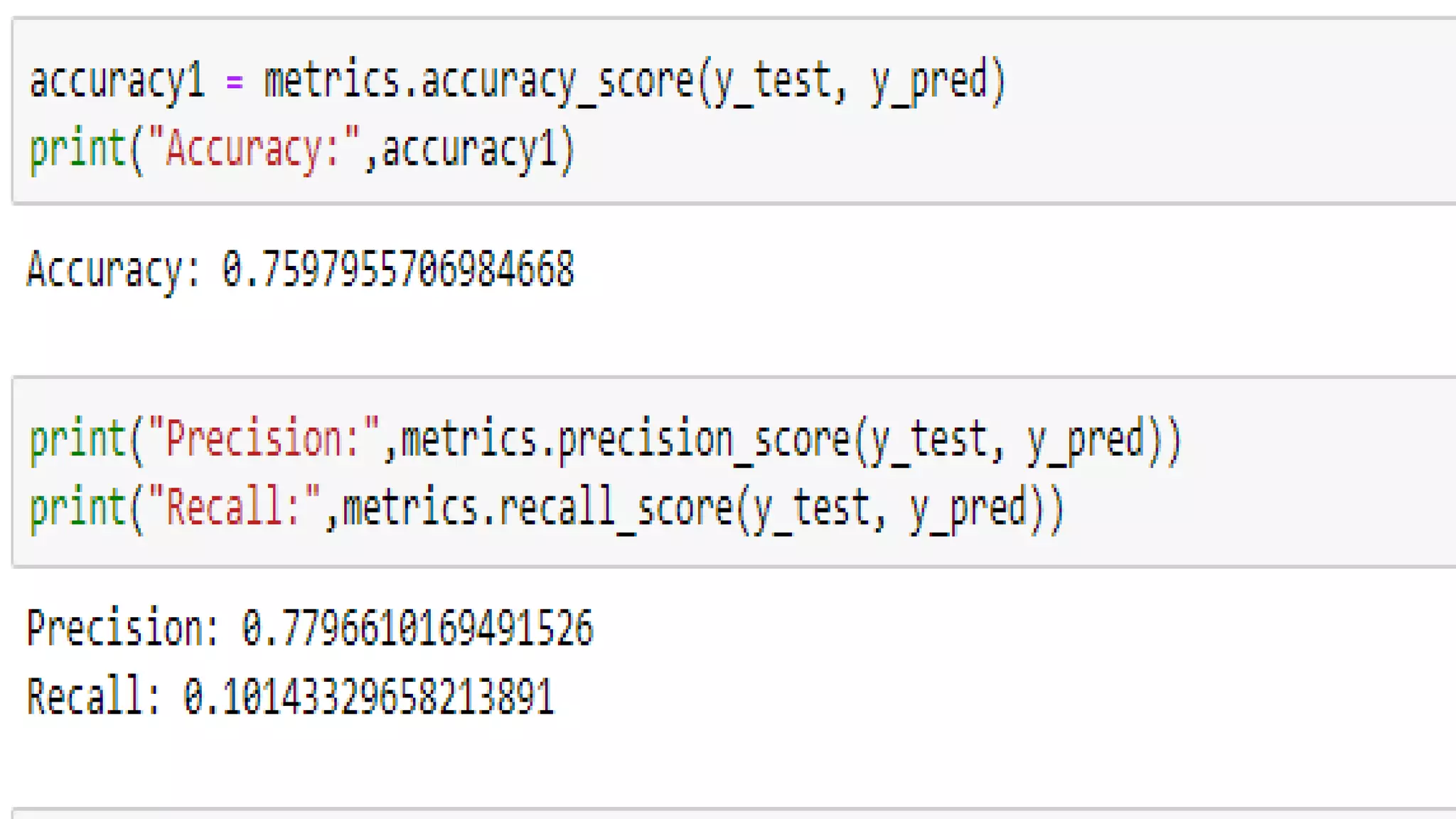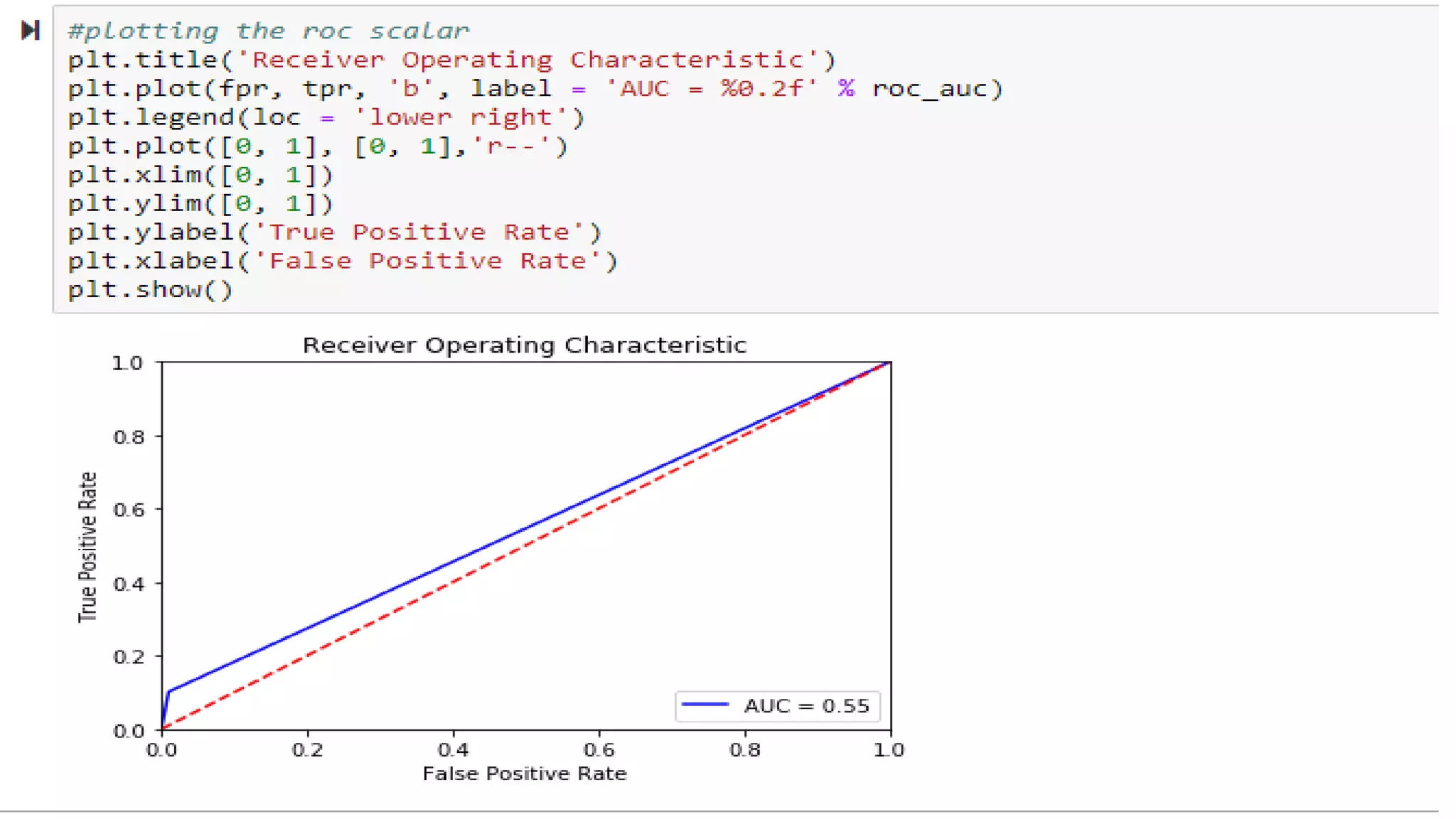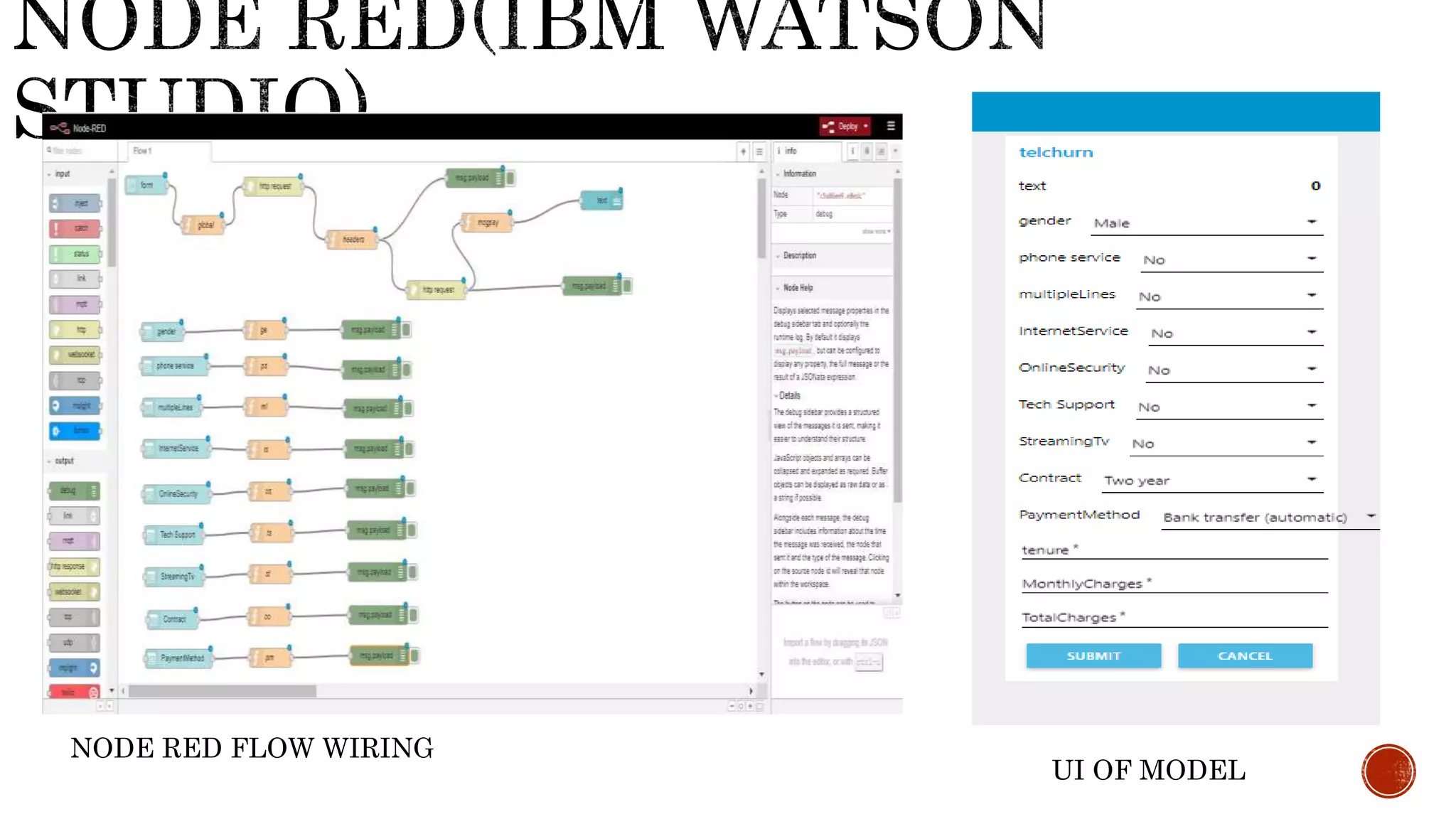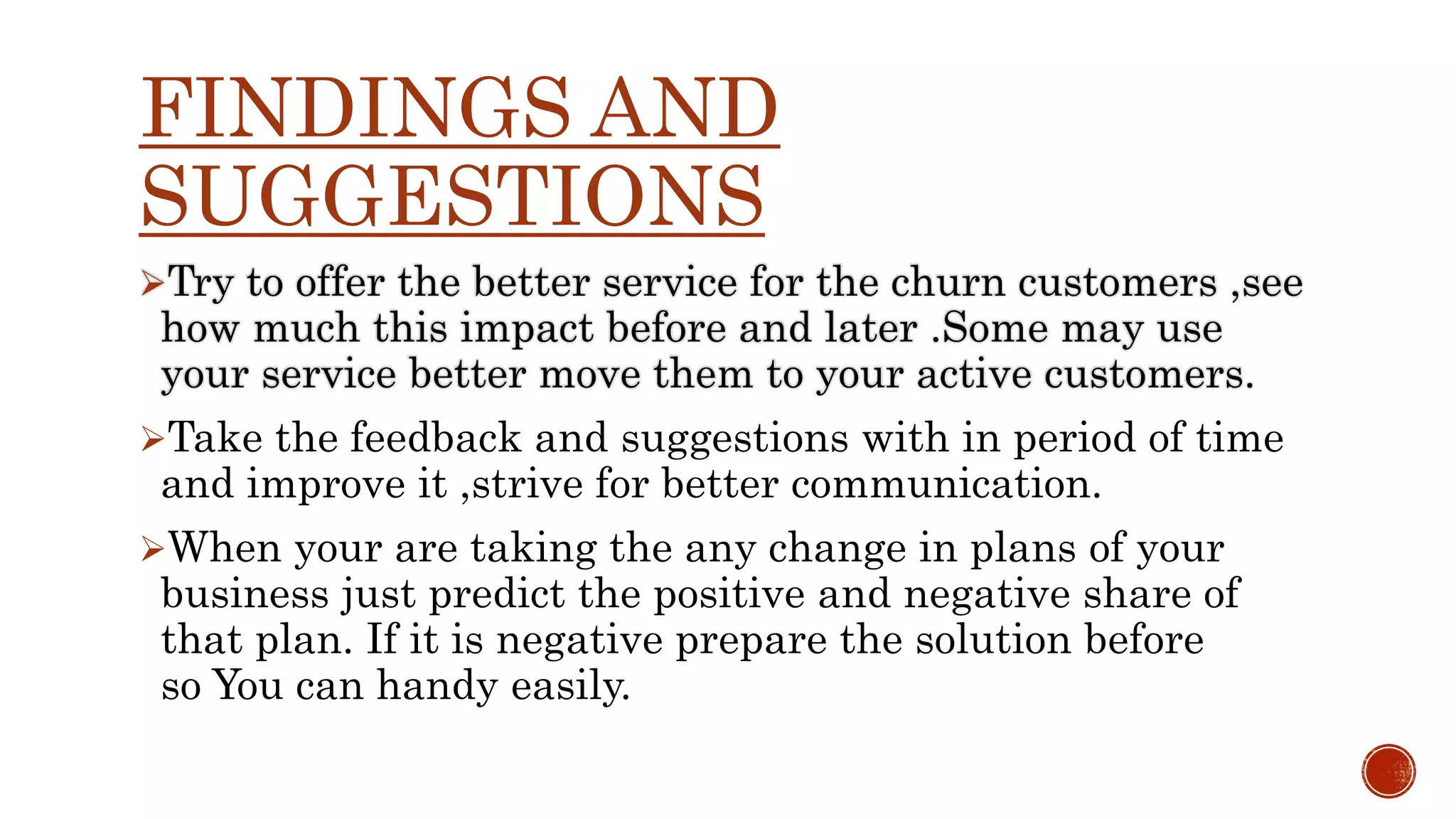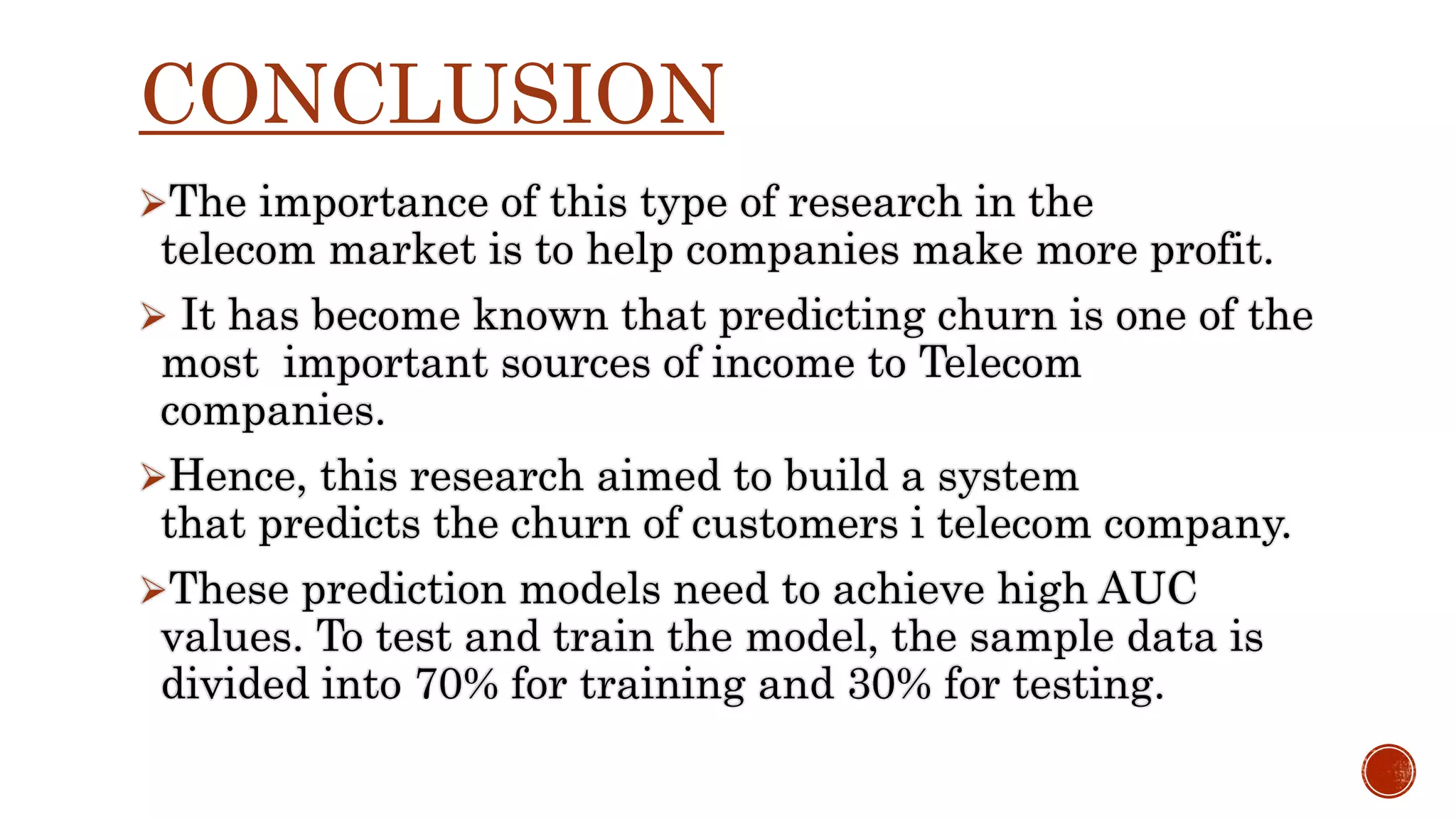This document discusses the importance of predicting customer churn in the telecom industry, emphasizing that it is more cost-effective to retain existing customers than to acquire new ones. It outlines the project objectives, dataset characteristics, methods for exploratory data analysis, and machine learning model evaluation, ultimately aiming to enhance customer retention strategies. The conclusion highlights the significance of churn prediction for increasing profitability in telecom companies and suggests proactive measures to reduce churn.




